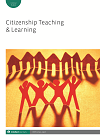
Full text loading...
 , Steven Camicia2
, Steven Camicia2
This qualitative case study examined how a class of fifth graders developed critical consciousness through critical literacy and social studies education. Activities in the class centred upon discussions of social justice-oriented texts. Findings revealed that when students engaged in texts dealing with social justice issues, they were able to take a critical stance on them. Based on the contextualized understanding of the texts, counternarratives and society, the students expanded their critical conversations about issues of power and privilege, especially white privilege. Critical literacy helped them internalize democratic values and civic virtues. Ultimately, this study provided a venue for children to increase agency and develop critical sociopolitical awareness as justice-oriented citizens who seek equity in our society.

Article metrics loading...

Full text loading...
References


Data & Media loading...

Publication Date:
https://doi.org/10.1386/ctl_00110_1 Published content will be available immediately after check-out or when it is released in case of a pre-order. Please make sure to be logged in to see all available purchase options.